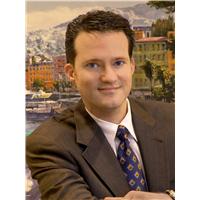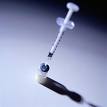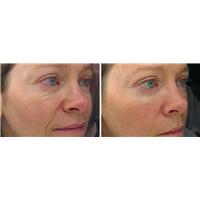
New treatments for aging hair
By Alan J. Bauman, M.D.
Facelifts, anti-wrinkle creams, tummy tucks and nutritional supplements whether youre 30 years old or pushing 80, women and men are doing all they can to look younger, healthier and more vibrant. But theres one thing many people seem to overlook which is the look and condition of their hair.
After all, ask any hair stylist, cosmetologist or fashion expert, and theyll be happy to tell you: whether we look old or young, hair has a lot to do with it. Hair has an enormous bearing on a persons perceptual age. And its hard to stop aging in its tracks when your hairline shows recession, bald patches or general thinning. We may not consciously think about it, but hair provides a visual frame to the face. Hair shapes a persons face and, as such, it accentuates key physical features of the face and body, whether good or bad.
Body weight, bone structure, skin tone and age all of these can be magnified or de-emphasized by the quality, quantity, shape and cut of a persons hair. Because of the important visual impact hair has on a persons overall appearance, making sure your hair is healthy, full and youthful is an important first step in battling the effects of aging.
Restoring the Visual Frame
Restoring the face to a healthy, youthful appearance requires a multi-therapy approach of which hair restoration is a critical component. Both plastic surgery and hair restoration share the same fundamental goal: to restore a healthy, youthful look to the face. Plastic surgery achieves this objective quite directly by eliminating wrinkles and tightening the skin via face-lifts, brow-lifts and other procedures. Hair restoration, on the other hand, secures this goal more obliquely, by restoring the visual frame to the face.
By restoring a receded hairline, increasing hair fullness or density and reducing bald spots, a hair restoration physician can help a patient achieve a new look for the face that is more balanced and youthful. Ultimately, this restored visual frame will help a person to take years off of their physical appearance and will greatly accentuate any other anti-aging treatments they may wish to pursue.
New Treatments for Hair Loss
In recent years, hair restoration has rapidly evolved to become a science all of its own. New technologies, medications and advanced surgical procedures have dramatically changed hair restoration from the inadequate procedures of the 1970s and 1980s to a fully legitimized medical science field with almost limitless potential.
Here are a few of the many new non-surgical treatment options for hair loss sufferers:
Approved Medications Clinically proven, clinically-approved topical medications (e.g., Propecia and Minoxidil) are well-known, tried-and-true therapies used to maintain and restore hair. For hair restoration physicians, these are the gold-standard.
Lasers: Low Level Laser Therapy (LLLT) is a relatively new technology believed to stimulate hair follicles at the cellular level, improving cellular metabolism, protein synthesis and microcirculation thus, helping to regrow hair. The treatment is pain-free and easy to do. Patients simply sit under a laser “hood” for about 15 minutes at a time (much like sitting under a hair dryer at the salon) to boost hair regrowth and healing after hair transplantation. LLLT is also available for private home use via small hand-held devices (see next section for more details).
Nutritional Supplements: A few supplements have shown some evidence they can improve the quality of hair growth, including a European product called Viviscal, which is comprised of marine extracts and a silica compound.
Microscopic Detection: By the time hair loss is visible to the naked eye, 50-percent of the hair has already been lost. New PC-based video microscopes, like the South Korean Folliscope, enable doctors to spot areas of thinning follicles before they become noticeable to the naked eye. These high-powered scopes can also track the early, subtle results of hair restoration treatments.
Healing Accelerators: Getting better after a microsurgery just got easier. New therapies like copper-peptide soaks, hyperbaric oxygen therapy and LLLT promise to help patients return to their regular routine faster.
The Benefit of Lasers
Conclusive medical studies have yet to be done on hair and laser therapy (LLLT). While laser therapy is not considered a miracle cure, there is a good deal of supporting clinical and anecdotal evidence that it enhances hair growth.
More than 2,500 scientific studies on laser therapy have been documented in a text called Laser Therapy: Clinical Practice and Scientific Background by J. Tuner and L. Hode. European studies have also shown that LLLT stops hair loss in 85-percent of cases and stimulates new hair growth in 55-percent of cases.
Additionally, a recent study of the HairMax LaserComb found an average increase of 93.5 percent in the total hair count of patients tested over six months.
Patients can undergo laser therapy at the doctors office with the new laser hoods, or they can try it in the privacy of their own homes. Some units are found only in physicians offices, some are in non-medical clinics. Home use of LLLT is now available through new hand-held laser devices, also known as laser combs or brushes. A few examples of the latest products available include the HairMax LaserComb ($395, £207, Euros 309) and Erchonia THL-1 ($3,500, £1,838, Euros 2,741)). LLLT is not a miracle cure – but it can be a helpful non-chemical, non-invasive treatment option patients may want to discuss with a hair restoration physician.
The Microsurgery Option
In spite of the many new remarkable technologies now available for the consumer, hair restoration surgery still remains the best option for achieving dramatic results. Over the past few years, these surgical procedures have rapidly evolved into minimally invasive microsurgeries that offer the triple benefits of artistic hairline recreation, virtually scar-less incisions and extremely short recovery times. Whereas in the past, hair loss sufferers had to settle for obvious Barbie and Ken doll-like hair plugs, todays hair transplant patient can choose a microsurgical option than can recreate a 100-percent natural-looking hairline.
Here are the latest advances in microsurgical hair restoration:
FUE: Follicular-unit extraction (or FUE) is a minimally invasive procedure in which a doctor can extract single follicular units (that means groupings of 1, 2 or 3 hairs) individually from the donor area without a scalpel. The benefits? Patients dont have to worry about stitches, linear scarring or long recovery times. Currently, only a few doctors are qualified to perform this advanced medical procedure but more doctors are learning how, especially through new education programs provided by the International Society of Hair Restoration Surgery (ISHRS).
Follicular-Unit Micrografting: Moving more hair follicles than ever before, follicular-unit micrografting enables physicians to transplant large areas of hair loss as well as artistically recreate natural hairlines. Like FUE, this microsurgical procedure allows for the careful, artistic angle orientation and position of each individual hair follicle to achieve a natural-looking hairline.
Trichophytic Donor Closure: In order to restore hair to one part of the head, you have to take it from somewhere else. In the old days of hair restoration, that usually meant patients were left with a sizable scar. But today a new technique called trichophytic donor closure allows hair to grow right through the thin scar line, thus more effectively concealing any signs of surgery even with short haircuts. This procedure should be used in conjunction with follicular-unit micrografting hair transplant surgery to achieve the best post-op results.
Seeing the Doctor
Turning back the clock isnt always easy but with the right doctor and multi-therapy program, it can be done. And hair loss is no exception. Whether youve noticed a few extra hairs in the shower drain and are worried about thinning, or youre suffering more extensive baldness, treatments are available to restore hair, improve your look and keep it that way. To get the most accurate and up-to-date information on battling hair loss, its essential for patients to talk to a trained hair restoration physician who has extensive experience in the many new minimally invasive procedures and effective medical therapies. Such physicians can inform patients of all their options from a medical perspective and provide them with realistic expectations of what each treatment or combination of treatments can provide. After a careful evaluation, the patient and physician can decide together on the best course of action for achieving the patients hair restoration goals.
Contact Info: Alan J. Bauman, M.D. is founder and medical director of the Bauman Medical Group based in Boca Raton, Florida, and is a leading authority on hair restoration for men and women. Contact details: www.baumanmedical.com T: 877-BAUMAN-9 (toll free in US) or + 1 561-394-0024


















